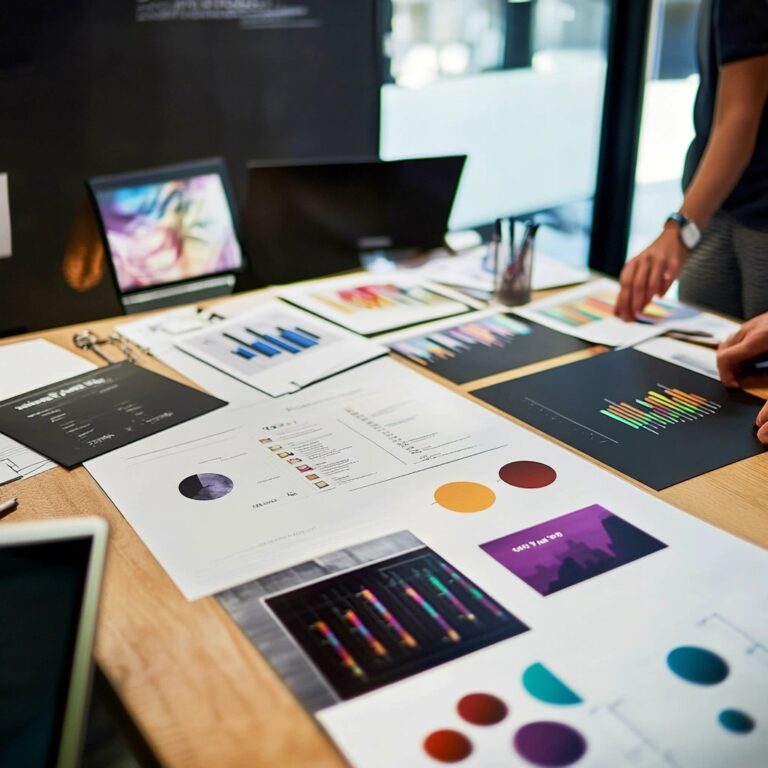Measuring and Understanding Social Reach vs Impression

Social media marketers must understand the significance of metrics and analytics. After all, it is the basis of which measuring social media performance takes place, and allows marketers the ability to make decisions about their types of campaigns, how to optimize them, and how to design their marketing strategy most effectively. But with so many social media metrics, how is a marketer to keep up with what they all mean? Or which ones are more important than others? Or, more critically, which ones to allocate more attention to in order to help achieve the goals of the social media campaign?
Let’s break it all down, shall we?
How To Measure Social Reach and Impression
When running social media marketing campaigns (especially paid social media marketing campaigns) the metrics associated with your key performance indicators (KPIs) are critical for understanding how successful your campaigns are or what areas you need to optimize. Two of the first metrics that you’d look at, which are very important to a social media strategy, are social impressions and social reach.
Understanding these KPI metrics can get a little confusing, as they are typically misconceived to mean the same thing, but in fact they are very different from each other. We’ll take a look at the definitions in just a moment, but first let’s briefly explain what is great about understanding these two KPI metrics: simply put, once you understand impression vs reach, you will have established a foundation that will allow you to start identifying what other metrics and key performance indicators are important to the well-being of your campaigns and social media marketing efforts.
The Definition of Social Reach
According to Influency.com, the true definition of social reach “tells us how many social media users have seen your content. The potential reach of an influencer is therefore the number of followers they have on a social network, or in other words, the number of users they could potentially impact.”
Let’s focus on Facebook’s platform as an example. A unique user who has liked or followed your Facebook page will become a part of your reach potential, meaning you could potentially reach their News Feed with your content as you post it. Now, it isn’t guaranteed that that person will actually see your twitter, Facebook, or Instagram post the reason being that there are various factors considered when calculating the reach of a piece of content. These might include elements like how active that person is on Facebook and how often or likely they are to check their Facebook News Feed. This is why, when you look at the number of reach your content has, it will never equal the number of likes or followers you have on your page. That person has to actually be shown and see your piece of content to be counted as 1 reach. And since Instagram removing likes, social reach has never been higher in demand. The true test of Influencer or influencer agency credibility will lay within their ability to maintain engagement with their target audience since visibility to the number of likes is no longer available.
The Definition of Impression
So, what does impressions mean on Instagram? Now let’s define a social impression. In simple terms, social impressions are calculated as the number of times the piece of content is seen. CoSchedule.com mentions, “Impressions help measure the number of people who have seen a post, even if they didn’t click, comment, or otherwise engage with that post.”
To refer back to using Facebook as an example, impressions are how many times the post or ad is seen in total. Every unique user can be shown the same piece of content multiple times. Have you ever scrolled through your Facebook News Feed and seen the same post or ad 3 times in the same session? Each of those times you saw them would be considered an impression, therefore in that session you were visiting Facebook you were served 3 impressions of that particular piece of content. Does it make sense yet?
The major difference between impression vs reach is that impressions measure the total number of times the content is actually being seen by the target audience, whereas reach is the number of people actually seeing the content.
How To Read These Metrics
When you’re reading your social media metrics, you might begin by viewing your Instagram impressions and reach, along with other social engagement metrics that Instagram insights and analytics provides along with other social media platforms. A couple of things to keep in mind as you’re reviewing are: Your viewable impression will always be higher than your social media reach, and your reach might be lower than the total number of likes or followers you have on your page. There is no need to panic if this is the case, this is totally common. In an ideal world, all of your followers would see and engage with every single piece of content you share on your page.
One of the reasons you won’t reach every person who follows your page, which I had mentioned earlier, is because not everyone who likes or follows your page will see your piece of content, as they might not be active or might not log into their account for an extended period of time and ever see that piece of content. This is why we always emphasize repurposing your content in different ways to maximize the time you’ve spent creating it. By turning a blog post into an infographic or a video into a photo carousel, you ensure that your content gets in front of new eyes and/or reinforces the message in a new way to people who may have already seen it.
And again, to reiterate, the higher number in your metrics that you will see will always be the impressions, because any one person you reach can have anywhere from a 1.5+ frequency of seeing your content. Remember that each of those views are calculated in your social media platform’s metrics as an impression.
Paid Social Reach and Impressions
Here’s where things get even more interesting. When running paid social media advertising, your reach and impressions take on a slightly different meaning. They are still the same by definition, however with a paid social media advertising budget you can now pay to get your content exposed to audiences outside of your immediate network. Additionally, where viewers will be able to see your content expands to the right sidebar on Facebook, Facebook Messenger, Stories, In-stream videos, Instant Articles, Marketplace, Instagram, Twitter, and other social media platforms. Additionally, when setting up your paid campaigns you can control what areas on the social media platforms you want your content to be shown.
Is Reach or Impression More Important?
Which is more important? Well, it totally depends on what you’re measuring but essentially both are very important. If you have established your audience and are looking to consistently stay in front of them as much as possible to build your brand recognition with them, then the number of times your content is viewed (impressions) is very important. However, if you don’t have enough people or reach to show that content to, then you would want to work on optimizing that metric first and then focus on the number of impressions you’re serving. Regardless, the goal is always to be constantly growing each of these metrics. One of the campaign goals for a marketer should be working towards increasing the number of social reach and impressions of a brand’s social media page.
While you’re developing your social media content strategy, keep in mind that there is something to be said about repetition and the influence that it has to a person recalling your brand. One of the major reasons impressions are a key performance indicator is that the more a brand is in front of their audience members, the more likely that brand is to establish a connection with that audience and that audience’s ability to recall the brand. Once that is established, the goals then begin to expand to influencing the behaviors and actions of the audience by encouraging them to make a purchase, repeat purchases, and refer business over to them by promoting their brand. This will lead to what we call a brand ambassador program. An influencer with a high engagement rate will drive attention from companies across the board that want them as the face of their brand.
Something else worth noting: building a healthy social media strategy requires you to consistently analyze and restructure based on these baseline metrics. Assessing where your brand is at this current moment, and where you want to be will help dictate your social media strategy.
So, why are these metrics important? Mostly because they help you figure out how your social media engagement rate is doing. If your numbers are looking low to you, then that is an indicator that you should boost your social media engagement. It could be telling you a number of things but two major things to look at is: your content isn’t catering or being received well by your audience, or your targeting and the audience you’re attracting isn’t ideal and needs some fine-tuning. You want to be posting disruptive, attention-grabbing, engaging content so that those who see it like it, share it, and/or leave a comment. The better your social engagement, the more your page is favored through the algorithms of social media platforms, the more your brand gets exposed to larger audiences (organically and through paid), and ultimately the more your reach and impressions grow.
Wrap Up
With a deeper understanding of social impressions and reach, you’ll be able to assess your social media engagement and better align your social media strategy. The main reason for this practice is to be sure that your content and brand are heading in the direction you want them to, and that you’re getting that content in front of the right people. What’s the point of publishing excellent content if no one will be seeing it, right?
If you want more insight to social impressions, reach out to our digital marketing agency today!
Our Editorial Standards
Reviewed for Accuracy
Every piece is fact-checked for precision.
Up-to-Date Research
We reflect the latest trends and insights.
Credible References
Backed by trusted industry sources.
Actionable & Insight-Driven
Strategic takeaways for real results.





